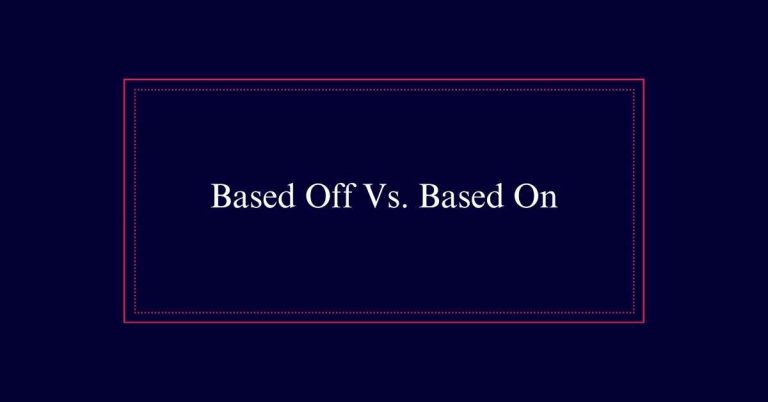What Does Irl Mean?
‘Irl’ stands for ‘in real life.’ The acronym is used to differentiate between online and offline experiences, underscoring the contrast between digital personas and real-world interactions.
Definition of ‘irl’
Understanding the term ‘irl’ is crucial for distinguishing between online and offline experiences.
The acronym ‘irl’ stands for ‘in real life.’ It is used to differentiate our everyday, physical lives from the digital interactions that occur online.
This term highlights the contrast between online personas and actual real-life situations. By using ‘irl,’ individuals emphasize that what is being discussed or portrayed happens in reality, not just in the virtual world.
It serves as a shorthand way to reveal the truth behind online representations, making it clear that there is a distinction between digital content and genuine experiences.
Origin of ‘irl’
The term ‘irl’ originated in the early days of the Internet to differentiate between online and offline activities. As the digital world expanded, people needed a way to distinguish between their virtual interactions and their actual, everyday lives. This shorthand became a quick and effective means to highlight the difference.
It underscores the contrast between online personas and real-life situations. The use of ‘irl’ allowed individuals to communicate more clearly about genuine experiences versus digital representations. Over time, it became a common part of Internet slang, helping people navigate and articulate the complexities of living in both digital and physical domains.
Online Vs. Offline
As the term ‘irl’ underscores the contrast between online personas and real-life situations, it becomes essential to explore the broader differences between online and offline experiences. The digital world offers a platform for curated content and controlled interactions. Conversely, offline experiences are spontaneous and less controlled.
Here are three key differences:
- Communication: Online, people often use text, emojis, and images. Offline, body language and tone add depth to conversations.
- Interactions: Online interactions can be edited and delayed. Offline interactions are immediate and unfiltered.
- Perception: Online, individuals can present idealized versions of themselves. Offline, people see the unedited reality.
Online Personas Vs. Reality
Online personas often differ markedly from the reality of individuals’ lives. On social media, people curate their images, sharing only the highlights and best moments. This can create an idealized version of their lives that is not entirely accurate.
In reality, individuals face challenges and mundane aspects that are rarely shown online. The contrast between online personas and real-life experiences can lead to misunderstandings and unrealistic expectations.

Shorthand for Reality
In substance, ‘irl’ serves as a shorthand for distinguishing between digital representations and actual real-life experiences. The term helps clarify when someone is referring to events or characteristics that exist outside of the digital domain, providing a clear demarcation between online and offline worlds.
Here are three key points to ponder about the use of ‘irl’:
- Clarity: It adds clarity by specifying that a statement pertains to the real world.
- Authenticity: It emphasizes the authenticity of experiences or observations.
- Conciseness: It provides a quick way to denote the difference between digital and actual realities.
Informal Communication
The term ‘irl’ is frequently used in informal communication to differentiate between online interactions and real-life experiences. It has become a common shorthand in digital conversations, especially among younger generations.
The use of ‘irl’ helps to quickly clarify that a statement refers to the physical world, not the digital one. This distinction is important as it emphasizes the contrast between virtual personas and actual human behavior.
In casual chats, social media posts, and text messages, ‘irl’ serves to bring a sense of authenticity and reality to the conversation. Its simplicity and brevity make it an effective tool for informal communication, allowing users to convey their point faster and more clearly.
Usage Guidelines
When using ‘irl,’ it is important to consider the context and audience for effective communication. This abbreviation is best suited for informal conversations and online interactions.
Here are some guidelines to follow:
- Informal Settings: Use ‘irl’ in casual chats, social media, or text messages. Avoid it in formal or professional communications.
- Audience Awareness: Make sure your audience understands internet slang. Not everyone is familiar with ‘irl,’ especially in a professional setting.
- Clarity: Use ‘irl’ to emphasize the difference between online presentations and real-life situations. It helps in making your point clear and concise.
Examples of ‘irl’
For better understanding, here are some examples of how ‘irl’ is used in everyday language.
Imagine someone saying, ‘I’m thinking about buying a sword irl.’ This means they are considering purchasing an actual sword, not just in a game.
Another example could be, ‘Those Instagram pictures have been retouched; he has considerably less hair irl.’ This highlights the difference between an edited photo and reality.
Similarly, ‘I met Javier Bardem at the airport; he’s very nice irl,’ indicates that the person met the actor in real life and found him to be kind.
Benefits of ‘irl’
Using ‘irl’ enhances communication by distinguishing real-life experiences from online interactions. This term helps convey authenticity and provides clarity in conversations. It allows people to emphasize the difference between digital portrayals and actual situations.
Here are three key benefits of using ‘irl’:
- Clarity: It helps clarify whether an experience or statement is from real life, reducing misunderstandings in digital communication.
- Authenticity: By using ‘irl’, individuals can stress the genuineness of their experiences, making their statements more relatable and trustworthy.
- Efficiency: The abbreviation saves time and space in text conversations, making it a convenient shorthand to quickly convey the intended meaning.
Impact on Communication
To conclude, additionally, the use of ‘irl’ greatly impacts communication by fostering transparency and honesty in online interactions. It bridges the gap between online personas and real-life identities. This distinction helps users understand that digital representations may differ from reality. By incorporating ‘irl’ into conversations, individuals can express genuine experiences and emotions more effectively. This enhances the authenticity of online discussions. It also encourages others to share their true selves, leading to deeper connections.
Additionally, ‘irl’ contributes to a better understanding of context by emphasizing the real-life aspect of a situation. To sum up, ‘irl’ serves as a valuable tool in promoting honest, clear, and meaningful communication in the digital age.






